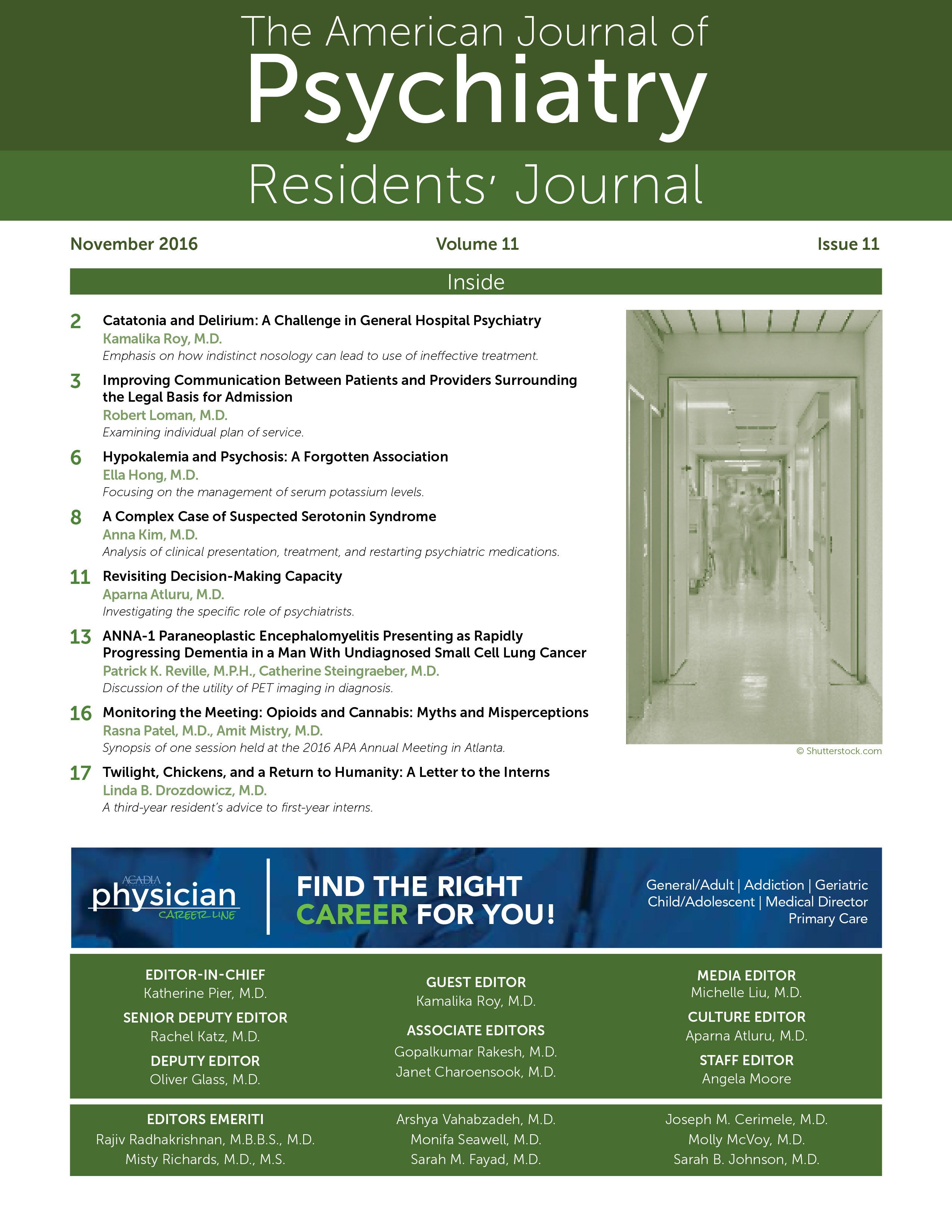Opioids and Cannabis: Myths and Misperceptions
What We Know
Dr. Nora Volkow, Director of the National Institute on Drug Abuse, discussed the opioid epidemic, a public health issue that plagues America. The opioid epidemic was put into the limelight by the media when opioid overdose mortalities surpassed mortalities by motor vehicle accidents in the 1990s, a time in which opioid prescriptions increased drastically. This was fueled by the growing concern of inadequate assessment and treatment of the “fifth vital sign”: patients’ pain. The ubiquity of pain, easy access to narcotic medications, and lack of public awareness about their addictive potential led to widespread misuse. Since 1999, opioid prescriptions have quadrupled, and opioid overdose is on the rise, especially in women ages 45–55 years-old (1).
What Is New
In March 2016, the Centers for Disease Control and Prevention released new opioid prescribing guidelines related to chronic noncancer pain (2). Many states have now mandated the use of prescription monitoring programs before prescribing opioids and other controlled substances in efforts to reduce misuse and make physicians aware of patients’ prescription habits. The biggest impact has come from building awareness of the issue. At the National Prescription Drug Abuse and Heroin Summit in March 2016, President Barack Obama spoke regarding the opioid epidemic. He at once acknowledged the gravity of the problem and rallied America to come together to address the epidemic.
Future Directions
Ongoing research is advancing our understanding of addictive pathways and biochemistry, as well as the identification of biomarkers to recognize which patients are at greater risk for developing addictive disorders (3). The development of opioid formulations that are tamper resistant and the development of pro-drugs might further reduce and deter abuse of prescription opioids (4). Dr. Volkow concluded by challenging physicians everywhere to address pain with more than their prescription pads. She asked that we become advocates for change and build awareness and provide education.
1.
2.
3. : Brain disease model of addiction: why is it so controversial? Lancet Psychiatry, 2015; 2:677–679 Crossref, Google Scholar
4. : An overview of prodrug technology and its application for developing abuse-deterrent opioids. Postgrad Med 2016; 128:97–105 Crossref, Google Scholar



